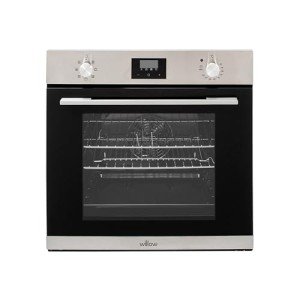The Ultimate Guide to Built-in Ovens: Enhancing Your Kitchen Experience
Built-in ovens have become a popular choice in modern-day kitchen areas, using a blend of functionality, style, and benefit. Unlike standard freestanding ovens, built-in ovens are integrated perfectly into cabinets, offering a streamlined appearance that can enhance the visual appeal of any kitchen. This article checks out the various types of built-in ovens, their benefits, setup factors to consider, and maintenance tips.
Comprehending Built-in Ovens
Built-in ovens are developed to be set up directly into kitchen cabinets, permitting a more customized kitchen setup. They usually come in 2 main types: single and double ovens.
Types of Built-in Ovens
- Single Ovens: These units use one cooking compartment, suitable for smaller sized kitchen areas or homes where cooking needs are modest.
- Double Ovens: As the name suggests, these systems feature two different cooking compartments, allowing users to prepare numerous dishes at different temperatures at the same time. This is especially beneficial for large households or those who typically entertain guests.
- Steam Ovens: These ovens cook food using steam, which can help retain moisture and nutrients. russell hobbs built under double oven are gaining appeal due to their health benefits.
- Mix Ovens: These versatile appliances integrate the functions of a regular oven and a microwave, making them perfect for quick cooking and reheating.
Secret Features to Look For
When considering a built-in oven, there are numerous features that can enhance your cooking experience:
- Smart Technology: Many contemporary built-in ovens come equipped with smart technology, enabling users to manage their oven remotely via mobile phone apps. Functions consist of pre-heating the oven, changing cooking times, and keeping an eye on cooking development.
- Self-Cleaning Functions: Built-in ovens with self-cleaning abilities can save time and effort in kitchen upkeep.
- Convection Heating: This function flows hot air for even cooking, making it perfect for baking.
- Security Features: Look for models geared up with functions like cool-to-the-touch oven doors and automatic shut-off options for included safety.
Advantages of Built-in Ovens
Visual Appeal: Built-in ovens supply a streamlined and modern-day look that can improve the overall style of a kitchen. They can be included into cabinetry, making them less intrusive than freestanding designs.
Area Efficiency: Built-in ovens enhance kitchen area, particularly in smaller kitchen areas where every inch counts. They can be placed at eye level, making it easier to keep an eye on cooking without flexing down.
Boosted Functionality: With their sophisticated functions, built-in ovens use improved cooking experiences and increased performance compared to standard ovens.
Setup Considerations
Setting up a built-in oven requires mindful planning and factor to consider. Here are some bottom lines to bear in mind:
- Space Requirements: Ensure that the chosen oven fits comfortably into the readily available cabinet space. Measure the dimensions precisely, representing ventilation and clearance requirements.
- Electrical Requirements: Built-in ovens normally require a devoted electrical circuit. Talk to an electrical expert for proper installation.
- Ventilation: Proper ventilation is vital for ideal oven efficiency. Verify that the installation area has adequate ventilation to avoid getting too hot and guarantee safe operation.
- Professional Installation: While DIY installation might seem appealing, enlisting the help of a professional can make sure that the oven is set up properly and safely.
Installation Steps
| Setup Step | Description |
|---|---|
| Step 1: Measure | Step the cabinet opening for your oven. |
| Step 2: Prepare | Prepare the electric outlet and ventilation options. |
| Step 3: Connect | Link the oven to power, ensuring all precaution are complied with. |
| Step 4: Secure | Protect the oven within the cabinetry, using suitable screws and brackets. |
| Step 5: Test | Run a test to make sure the oven is working properly. |
Upkeep Tips
Routine upkeep can extend the life of your built-in oven and guarantee optimum performance. Here are some maintenance ideas:
- Clean Regularly: Wipe down the oven outside and clean the interior frequently. Use self-cleaning functions where offered.
- Check Seals: Ensure that door seals are intact to preserve effectiveness and cooking efficiency.
- Screen Performance: Pay attention to how your oven functions-- if you see unequal cooking or uncommon sounds, it might need professional maintenance.
- Follow Manufacturer Guidelines: Always adhere to the maintenance guidelines provided by the producer. This can help prevent problems and guarantee that warranties remain valid.
Frequently Asked Questions about Built-in Ovens
What is the difference between a built-in oven and a freestanding oven?
- Built-in ovens are integrated into kitchen cabinetry, providing a streamlined appearance, while freestanding ovens are standalone appliances that can be put throughout the kitchen.
Do built-in ovens require more maintenance than routine ovens?
- Not necessarily. Maintenance depends upon use and cleaning routines more than the type of oven. Routine care is vital for all ovens.
Can I install a built-in oven myself?
- While it is possible to set up a built-in oven yourself, it is recommended to hire an expert to guarantee safe and precise setup, especially relating to electrical requirements.
What are the typical costs of built-in ovens?
- Costs can differ significantly based upon brand, functions, and specs. Standard models may start around ₤ 800, while high-end models can exceed ₤ 3,000.
Are built-in ovens energy-efficient?
- Many modern-day built-in ovens are created to be energy-efficient. Look for models with an ENERGY STAR certification for the best performance.
In conclusion, built-in ovens are an excellent addition to any contemporary kitchen, integrating aesthetics with performance. By understanding the different kinds of built-in ovens, their features, and the associated setup and maintenance requirements, homeowners can make an educated choice that improves their cooking experience and general kitchen design. As cooking technology develops, built-in ovens are likely to play an integral role in the future of home cooking areas, making sure delicious meals are prepared with ease and convenience.

